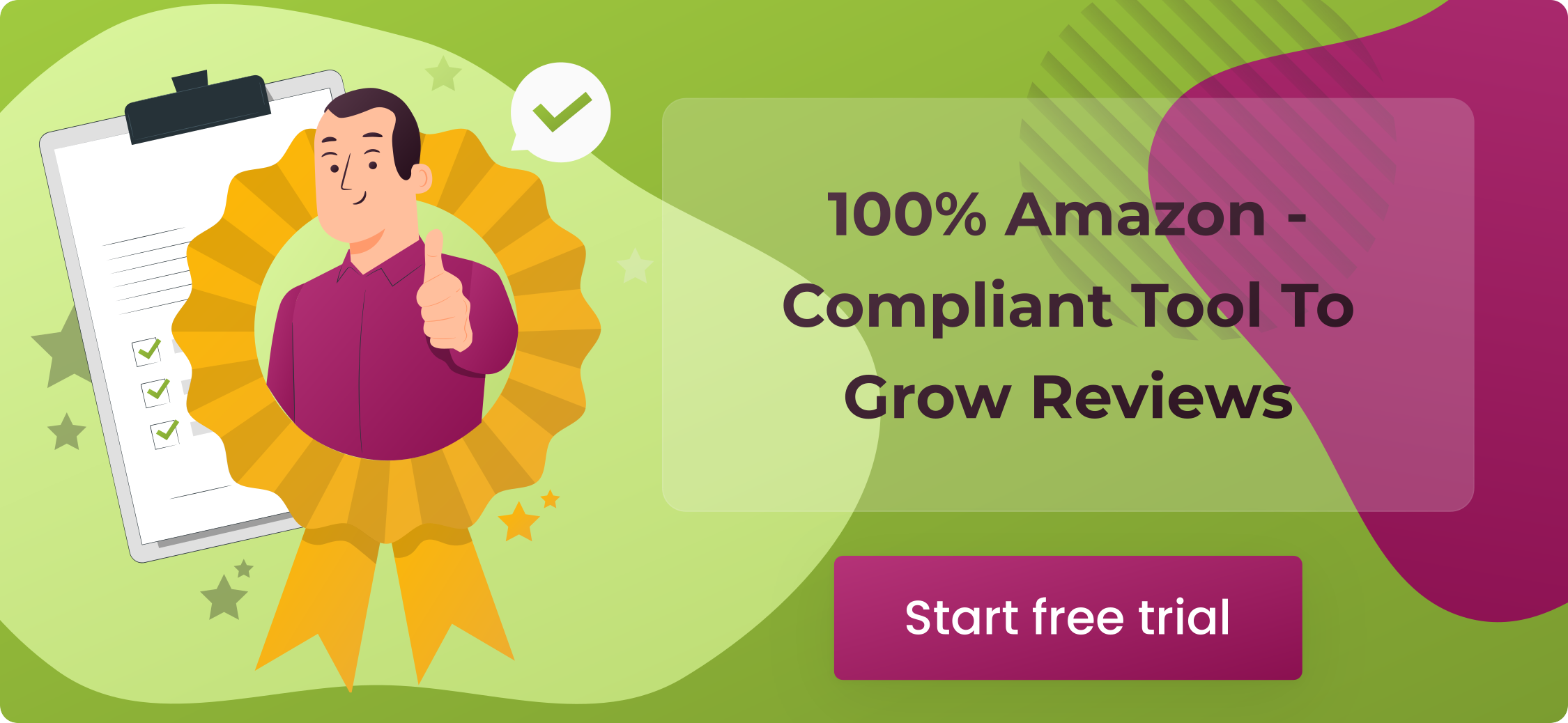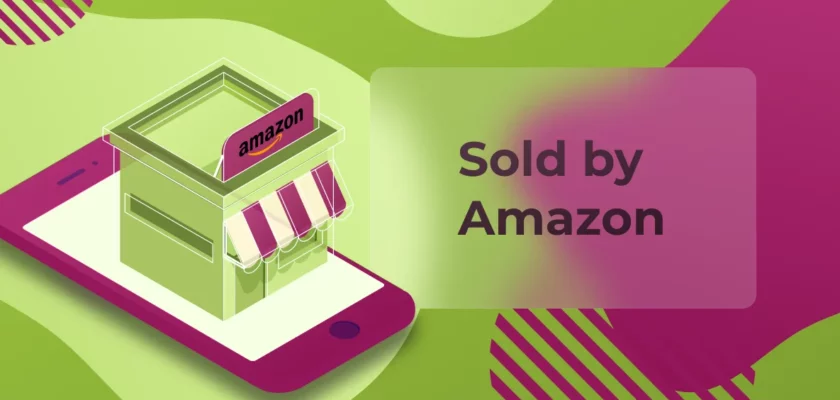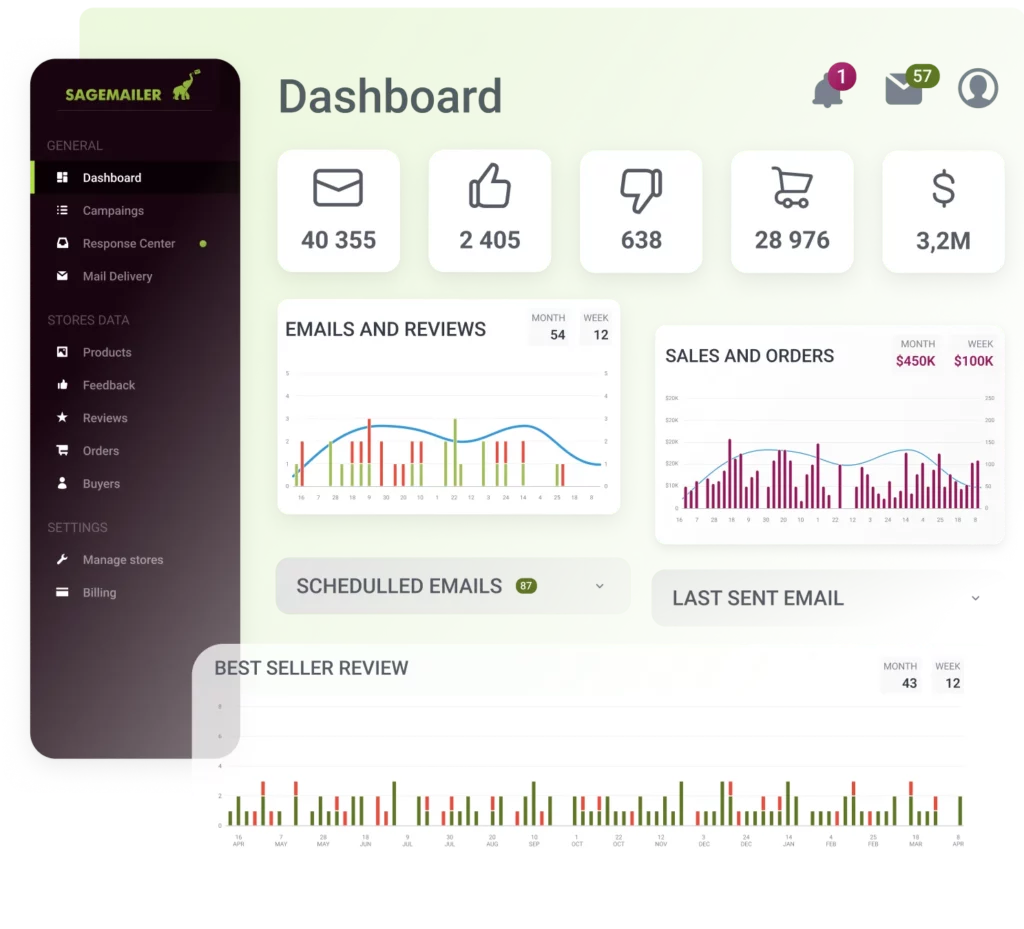Table of Contents
As an Amazon seller, you understand the importance of sourcing products that can drive sales and customer satisfaction. While third-party sellers offer a wide range of products, a certain level of trust and reliability is associated with items sold directly by Amazon. These products are not only backed by Amazon’s outstanding customer service but often hold advantages in terms of Buy Box visibility, Prime eligibility, and customer trust.
An essential factor in building this trust is leveraging amazon customer reviews, which provide insights into product quality and performance. The question then arises: How can you identify and source items sold by Amazon to leverage these benefits? In this post, we will guide you through various methods and tools to help you discover products directly sold by Amazon.
Whether you’re a seasoned seller looking to diversify your inventory or a new seller wanting to explore reliable product options, this article will equip you with valuable insights and strategies. From uncovering the hidden treasures within Amazon’s vast catalog to strategically incorporating them into your sourcing strategy, we will cover it all. By the end of this post, you’ll be armed with the knowledge to identify and capitalize on the products sold by Amazon, empowering you to take your business to new heights.
So, let’s dive in and explore the techniques, tips, and tools that will unlock the gateway to finding items sold by Amazon, giving you a competitive edge and more significant opportunities for success on the world’s largest online marketplace.
What Is Sold by Amazon (SBA)?
Sold by Amazon (SBA) refers to products sold directly by Amazon itself as the retailer rather than being sold by third-party sellers on the Amazon marketplace. These products are listed and fulfilled by Amazon, meaning that the marketplace handles the entire process, from inventory management to shipping and customer service.
SBA is a specialized initiative designed for brand owners to leverage Amazon’s extensive retail infrastructure. By enrolling your products in the SBA program, you entrust Amazon with the responsibility of selling and shipping your items directly to customers. SBA items are often marked with the “Sold by Amazon” label on their product pages. This distinction signifies that the marketplace takes full responsibility for the product, ensuring consistent quality and customer support.
When you participate in SBA, Amazon assumes ownership of the enrolled products until a customer purchases them. Despite this, you still receive the proceeds from any sales made. However, it’s important to note that by joining SBA, you relinquish control over the pricing of your products.
The marketplace employs a dynamic pricing engine within the SBA program, automatically determining the optimal price for your products in real time. This engine considers data from similar products available on Amazon and prices from other marketplaces. The primary goal of this pricing strategy is to ensure the best possible experience for Amazon’s customers.
As a consequence of Amazon’s customer-centric approach, enrolling in SBA often results in a noticeable reduction in the prices of your products. This pricing adjustment is intended to align your offerings competitively with other products in the marketplace and enhance the overall shopping experience for Amazon customers.
By meeting the requirements and successfully enrolling in the SBA program, you can leverage the benefits of selling directly through the marketplace and tap into their vast customer base and fulfillment capabilities.

SBA enrollment requirements
To apply for the SBA program, you need to meet specific requirements and qualifications. By meeting these requirements, you can maximize your chances of qualifying for the Sold by Amazon program. Here are the typical prerequisites to be eligible for the SBA program:
Professional Seller Account: You must have a Professional Seller Account. This account type requires a monthly subscription fee but provides access to advanced selling features and tools.
Enrolled in the FBA Program: To participate in the Sold by Amazon (SBA) program, you must be enrolled in Amazon’s Fulfilled by Amazon (FBA) program. FBA allows you to store your inventory in Amazon’s fulfillment centers and leverage its logistics network for efficient order processing and delivery.
Goods Listed in Amazon’s Brand Registry: Selling goods as part of Brand Registry can enhance your eligibility for the SBA program. The Brand Registry is designed to protect intellectual property rights and promote brand authenticity. It requires you to have a registered trademark for your brand and provides additional tools and benefits to brand owners on the platform.
Positive Seller Performance: Amazon evaluates your seller performance metrics, such as order defect rate, late shipment rate, and customer feedback. Maintaining a solid performance record increases your chances of acceptance into the SBA program.
Proven Sales History: Amazon may require you to demonstrate a consistent sales history on the platform. This could include a minimum number of orders, a certain level of revenue, or a specific period as an active seller.
Note: Meeting these requirements does not guarantee acceptance into the SBA program. Amazon reviews applications on a case-by-case basis, and their decision ultimately depends on various factors, including the current needs of their marketplace.
How to Improve Your Chances to Join SBA?
Amazon assesses multiple criteria, including seller performance, product quality, and other qualifications. Therefore, maintaining a stellar reputation through positive reviews, combined with meeting program requirements, can increase your likelihood of being accepted into the SBA program. Multiple good reviews can positively impact your chances of joining the SBA program.
SageMailer will help you to get positive reviews and better serve your customers. This tool assists sellers in optimizing their communication with customers, managing feedback, and enhancing their overall selling experience on the platform.
SageMailer offers many valuable features:
Review & Feedback Alerts: Receive instant email alerts for new product reviews and feedback, allowing you to respond quickly and take necessary actions.
Detailed Campaign Analytics: Access comprehensive metrics presented in easy-to-understand graphs, enabling you to analyze your mailing campaigns’ performance and conversion rates.
Powerful Amazon Review Emails: Increase the generation of Amazon feedback using two options: leveraging the “Request a Review” Button or utilizing professional Buyer-Seller messaging templates.
A/B Testing: Conduct simultaneous tests on different email templates to determine which messages most effectively strengthen your customer relationship.
Response Center: Consolidate all buyer inquiries into one convenient location, complete with order details and conversation history, eliminating the need to log in to multiple dashboards.

Difference between Sold by Amazon (SBA) and Fulfilled by Amazon (FBA)
Sold by Amazon (SBA) and Fulfilled by Amazon (FBA) are two different terms that refer to distinct ways in which products are handled and sold on the Amazon marketplace. While both SBA and FBA involve Amazon’s involvement in the selling process, SBA refers specifically to items sold directly by Amazon as the retailer. In contrast, FBA refers to products sold by third-party sellers but fulfilled by Amazon’s logistics network. SBA and FBA offer unique advantages for sellers, and understanding their differences can help you make informed decisions when sourcing and selling products.
Sold by Amazon (SBA):
- SBA refers to products that are sold directly by Amazon as the retailer.
- Amazon takes complete responsibility for the product, from inventory management to shipping and customer service.
- The “Sold by Amazon” label lists SBA items on Amazon’s product pages.
- Amazon sets the price, handles customer inquiries and returns, and fulfills the orders from its own inventory.
- These items are typically eligible for Amazon Prime, providing the benefits of fast and free shipping to Prime members.
- SBA products often enjoy higher customer trust due to Amazon’s reputation for reliable service.
- Winning the Buy Box for SBA items is more likely, as Amazon controls the fulfillment process and can offer competitive pricing and reliable delivery.
Fulfilled by Amazon (FBA):
- FBA refers to a program where third-party sellers store their products in Amazon’s fulfillment centers.
- Sellers list their products on Amazon’s marketplace and utilize Amazon’s fulfillment services.
- The products carry the “Fulfilled by Amazon” label on their product pages.
- Amazon handles storage, packaging, shipping, and customer service for FBA items.
- FBA sellers benefit from Amazon’s extensive logistics network and customer trust.
- FBA items are also often eligible for Amazon Prime, offering fast and reliable shipping options.
- Winning the Buy Box for FBA products depends on various factors like price, seller performance, and customer feedback.
Pros and Cons of Sold by Amazon
Analyzing the advantages and disadvantages of enrolling in the Amazon SBA program helps sellers make informed decisions about their product selection, pricing strategies, and long-term brand positioning.
Pros of Amazon SBA:
Sales Tax Handling: Amazon takes care of sales taxes for SBA sales and provides a tax-exempt certificate.
No Enrollment Fee: Joining the SBA program is free of charge, allowing easy access for sellers.
Streamlined Pricing: The marketplace automatically determines competitive prices for your enrolled products, saving you time and effort.
Product Selection Control: Sellers have the freedom to choose which of their products to enroll in the SBA program.
Listing Optimization: While Amazon controls pricing, sellers still retain the ability to optimize their product listings as desired.
Buyer Confidence: Products listed as “Shipped and Sold by Amazon” instill trust and confidence in customers, assuring them of product authenticity.
Cons of Amazon SBA:
Minimum Gross Proceeds (MGP): Amazon sets a minimum return for SBA sales, potentially resulting in lower profit margins per sale due to their focus on offering the lowest prices to customers.
Limited Benefits Guarantee: Although Amazon handles pricing, it does not guarantee increased sales. Their primary concern is customer satisfaction, which may not always align with the best interests of third-party sellers.
Negative Brand Impact: Meager prices associated with SBA products may create a perception of your brand as budget-oriented, affecting your ability to establish a strong reputation and sell products at a premium.
Changes to Minimum Gross Proceeds: The SBA agreement allows the marketplace to review your products after six months and modify the MGP. Sellers must accept these changes or remove their products from the program.
Finding Items Sold and Shipped by Amazon
Finding items sold and shipped by Amazon is a straightforward process on the Amazon marketplace. By following these steps, you can effectively identify and find items that are sold and shipped by Amazon, ensuring a reliable and seamless shopping experience backed by Amazon’s customer service and fulfillment capabilities. Below, you can find the steps to follow.
Step 1: Visit Amazon’s website or open the Amazon mobile app.
Step 2: In the search bar, enter the desired product or category you wish to explore.
Step 3: On the search results page, you’ll see various listings for the product you searched. Look for the filter options on the left-hand side of the page (on the desktop) or tap on the “Filter” button (on the app).
Step 4: Locate the “Seller” or “Fulfillment” section within the filters.
Step 5: Within the “Seller” or “Fulfillment” section, select the option that corresponds to “Amazon.com” or “Amazon” to filter the results to show items sold and shipped by Amazon.
Step 6: Apply the filter, and the search results will update to display only products sold and shipped by Amazon.
Step 7: Browse through the filtered results to find the desired item(s) that meet your requirements.
Step 8: Click on the product listing to view more details, including product description, price, customer reviews, and other relevant information.
Step 9: If the item meets your criteria, purchase it by adding it to your cart and following the checkout process.
Applying to Sold by Amazon
You can apply for the Sold by Amazon program through your Seller Central account if you meet the abovementioned qualifications.
Applying for the Sold by Amazon (SBA) program is a straightforward process that can be done through your Seller Central account. Following these steps, you can apply for the Sold by Amazon program and access the Manage Inventory menu to view your eligible products. Below are the steps to follow.
Applying for the SBA program step-by-step
Step 1. Access Your Account Info: Log in to your Seller Central account and navigate to the Settings menu. From there, select “Account Info” to proceed.
Step 2. Check for SBA Eligibility: Look for the Your Services label within the Account Info section. If any of your products are eligible for the SBA program, you will find an option to register for it.
Step 3. Register for SBA: Click the registration option to enroll in the program. It’s important to note that registering will not automatically enroll any of your products in SBA.
Step 4. Access the Manage Inventory Menu: Navigate to the Manage Inventory menu after successfully registering for the program. You will now see an additional option titled “Sold By Amazon.”
Step 5. View Eligible Products: Click on the “Sold By Amazon” link to access a list of eligible products to be sold and shipped by Amazon. This list will provide information on each product, including Amazon’s minimum gross proceeds set for each item.
Conclusion
In conclusion, knowing how to find items sold by Amazon is essential for Amazon sellers looking to tap into the benefits of the platform. Following the simple steps outlined in this post, you can easily filter search results to display products sold and shipped by Amazon.
Opting for items sold by Amazon brings advantages such as streamlined pricing, enhanced buyer confidence, and the convenience of Amazon handling sales taxes. However, it’s crucial to consider the potential trade-offs, such as reduced control over pricing and the minimum gross proceeds set by Amazon.
As you navigate the world of selling, remember to stay informed about program requirements, seller performance metrics, and customer satisfaction to maximize your success on the platform. You can enhance your sales performance and thrive as a seller by continually refining your strategies and leveraging available resources.



